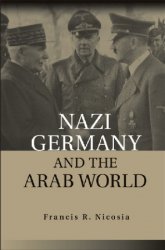According to Woodrow Wilson, World War I had been
fought “to make the world safe for democracy.” In 1919,
there seemed to be some justification for his claim. Four
major European states and a host of minor ones had functioning
political democracies. In a number of states, universal
male suffrage had even been replaced by universal
suffrage as male politicians rewarded women for their
contributions to World War I by granting them the right
to vote (except in Italy, Switzerland, France, and Spain,
where women had to wait until the end of World War II).
In the 1920s, Europe seemed to be returning to the political
trends of the prewar era—the broadening of parliamentary
regimes and the fostering of individual liberties.
But it was not an easy process; four years of total war
and four years of postwar turmoil made the desire for a
“return to normalcy,” in Wilson’s words, both difficult and
troublesome.
After World War I, Great Britain went through a period
of painful readjustment and serious economic difficulties.
During the war, Britain had lost many of the markets
for its industrial products, especially to the United
States and Japan. The postwar decline of such staple industries
as coal, steel, and textiles led to a rise in unemployment,
which reached the two million mark in 1921.
Britain experienced renewed prosperity between 1925
and 1929, but it proved relatively superficial. British exports
in the 1920s never compensated for the overseas investments
lost during the war, and even in these purportedly
prosperous years, unemployment remained at a
startling 10 percent. Coal miners were especially affected
by the decline of the antiquated and inefficient British
coal mines, which also suffered from a world glut of coal.
After the defeat of Germany and the demobilization of
the German army, France became the strongest power on
the European continent. Its biggest problem involved the
reconstruction of the devastated areas of northern and
eastern France. But neither the conservative National
Bloc government nor a government coalition of leftist
parties (the Cartel of the Left) seemed capable of solving
France’s financial problems between 1921 and 1926. The
failure of the Cartel of the Left led to the return of the
conservative Raymond Poincaré (1860 –1934), whose
government from 1926 to 1929 stabilized the French
economy by means of a substantial increase in taxes during
a period of relative prosperity.
When the imperial Germany of William II came to an
end with Germany’s defeat in World War I, a German
democratic state known as the Weimar Republic was established.
From its beginnings, the Weimar Republic was
plagued by a series of problems. It had no truly outstanding
political leaders, and those who were relatively
able—including Friedrich Ebert, who served as president,
and Gustav Stresemann, the foreign minister and
chancellor—died in the 1920s. When Ebert died in
1925, Paul von Hindenburg (1847–1934), a World War I
military hero, was elected president. Hindenburg was a
traditional military man, monarchist in sentiment, who
at heart was not in favor of the republic. The young re-
public also suffered politically from attempted uprisings
and attacks from both the left and right.
The Weimar Republic also faced serious economic
difficulties. Germany experienced runaway inflation in
1922 and 1923, with grave social effects. Widows, orphans,
the retired elderly, army officers, teachers, civil servants,
and others who lived on fixed incomes all watched
their monthly stipends become worthless or their lifetime
savings disappear. Their economic losses increasingly
pushed the middle class to the young German Communist
Party or to rightist parties that were equally hostile to
the republic.




 World History
World History









